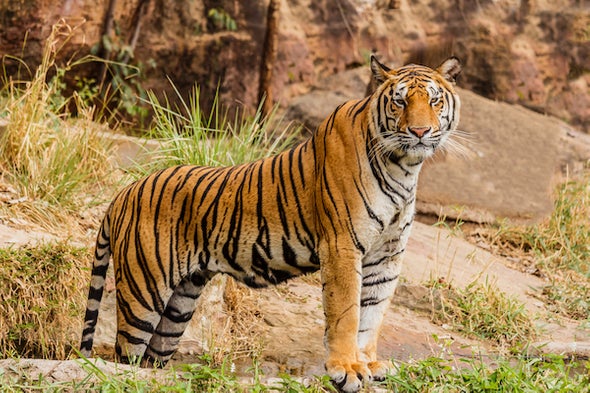KATHMANDU: A study jointly conducted by three countries had established that there were 52,671 sq.km. of tiger habitat in high altitudes or Himalayan habitats of India, Nepal, and Bhutan.
With studies earlier this year reporting the presence of tigers in high altitude regions in India, experts from India, Nepal, and Bhutan — under the aegis of their governments — will next year begin a detailed assessment on how entrenched tigers are, in these regions.
A study jointly conducted by experts from three countries had, in a report this month, established that there were potentially 52,671 square kilometers of tiger habitat in high altitudes — or Himalayan habitats — of India, Nepal, and Bhutan. 38,915 square kilometers of this habitat lay in India.
While India is home to the most number of tigers in the world, most of them are focused in Central India and the Western Ghats. The latest tiger survey made public earlier this year estimated 2,967 tigers all over India.
Camera traps laid in select districts of Uttarakhand, Sikkim, North Bengal, and Arunachal Pradesh to detect the presence of tigers in higher altitudes found only three — two in Sikkim and one in Uttarakhand.
“What we’re not sure of is whether these tigers are embedded there or whether they have migrated in from other parts of the country. A more detailed assessment is necessary to find this out,” said Rajesh Gopal, Secretary-General, Global Tiger Forum. (GTF). The GTF is an intergovernmental body that coordinates activities on tiger conservation.
In previous years, tigers have been reported in Arunachal Pradesh, Uttarakhand and West Bengal at elevations of 1765m, 3274 m and 2400 m respectively. Bhutan had recorded the presence of a tiger at 4,210 m.
Recording the presence of tigers in high altitudes is important to judge the health of the species, as poaching and fragmented habitat are serious challenges to their population growth.
As part of a “high altitude tiger master plan”, gathering background information on land attributes, ascertaining the status of protection and engaging local communities in tiger conservation is critical. Potential high altitude tiger landscapes include the Valmiki-Chitwan-Annapurna (India-Nepal), Manas-Royal Manas-Jigme Dorji (India-Bhutan); Neora Valley-Torsa-Buxa-Phibsu (India-Bhutan); Askot-Pithoragarh-Nandhaur-Suklaphanta (India-Nepal); and Arunachal-Sikkim-bordering Bhutan (India-Bhutan).
(with inputs from Hindustan Times)









Comment